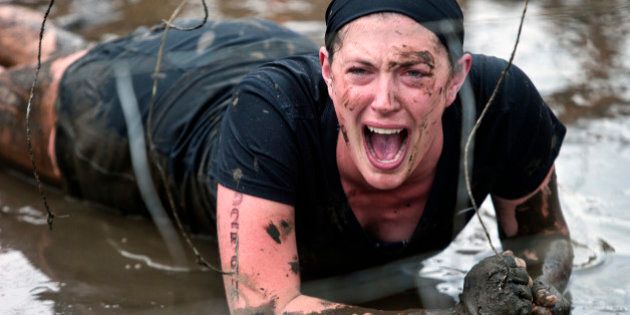
Obstacle races like the insanely popular Tough Mudder race — dubbed "America's fastest growing sport" by Outside magazine — are intense, dirty, and taking off like wildfire around the globe. But with names like Electroshock Therapy, Warrior Dash, Tough Guy, and Trench Warfare, are they safer than they sound?
Races from companies like Tough Mudder, a 10-12 mile (16-19 km) obstacle challenge, have been aggressively marketing themselves across Europe and the US the past few years and are now reaping the rewards with the eager masses signing up to run through icy pits, scale walls, crawl through mud-filled tubes, and sprint through fire. But as more and more people are turning up at emergency rooms with serious injuries, scientists have started to investigate what's going on.
After a series of injuries from Tough Mudders in the US, including the death of one 28-year-old, a new study aims to alert runners to what kinds of risks they are really signing up for. Findings were published last week in the journal Annals of Emergency Medicine.
"The volume and severity of injuries in the Tough Mudder race we studied was unusually high, possibly leading to some permanent disabilities," said lead study author Dr. Marna Rayl Greenberg, of Lehigh Valley Hospital and Health Network in Allentown, Pennsylvania, in a statement.
"The 1.5 million people who are predicted to enter obstacle races like this in the next year should be well aware of the risks they are taking."
The study describes five patients injured at a two-day event who were treated at a local emergency department in Pennsylvania. Thirty-three other race participants were also injured and treated in the same hospital, but were not included in the study. One of the patients had burn marks and heart inflammation after receiving 13 electrical shocks, while another had sustained multiple electrical shocks to the head while running through water, which resulted in fainting. A third patient, after completing 20 out of 22 obstacles, developed seizure-like activity and was unable to move his entire right side. Six months after the injury, he still had lower right leg disability.
Unlike marathons, where months of training strongly enhance your ability to perform well with less risk of injury, obstacle races are nearly impossible to train for, the study authors write. "No training on earth can adequately prepare participants for elements such as jumping from a nine-foot height or running through a field of electrical wires while wet and hot," Greenberg said.
"In the past few years, obstacle racing has experienced a rate of growth that may be unprecedented in the history of participatory sports," she added. "Organizers, participants and local emergency services need to be prepared for a large number of diverse injuries at Tough Mudder and other similar obstacle races."
Access the study (pdf): http://www.annemergmed.com/webfiles/images/journals/ymem/YMEM5703_proof.pdf
Also on HuffPost